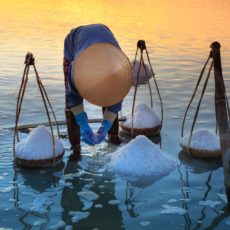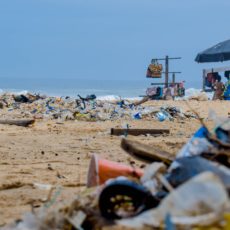The sun’s out, time to hit the beach! Watch out for the wave of plastic as it crashes to the shore! We can all ensure ocean plastic isn’t humankind’s legacy!
Read morePollution
Denim Microfibers in the Ocean

It’s not just our closets getting clogged with too much denim—the ocean is, too.
Read more8 Surprising Places You’ll Find Plastic

Today, we’ve got a list of things to try to cut out of your life to avoid plastic inadvertently sneaking in there.
Read more8 Places You’d Be Surprised To Find Plastic…But It’s There!

One of the most challenging changes to make in our lives is removing plastic. But the thing is, it’s also one of the most impactful changes you can make!
Read moreAre you one of the hordes jumping on your new e-bike? If not….why not?!

Looking for the environmental silver linings of the COVID-19 pandemic is not a new angle from here in The Hive. But I can’t think of another which offers an equally impressive positive outcome for your health too.
Read moreThe problem with Greenwashing, and how to spot it

You’ve probably noticed the sudden abundance of products which are eco-friendly, environmentally friendly, green, biodegradable, sustainable, natural, sourced sustainably, recycled, recyclable, compostable, and so on and so forth. There’s an exhausting list of terms which could be
Read morePlastic-Free Period

In the United States alone, approximately 12 billion pads and 7 billion tampons are discarded each year. Most of this ends up in landfill where it can take centuries to breakdown. Some ends up in our waterways and then washed up on our beaches. In fact, sanitary products are the fifth most common item found on Europe’s beaches, and are more widespread than single-use coffee cups, cutlery, or straws.
Read moreSustainable Period

Today we’re talking periods and plastic. Before you decide this doesn’t concern you as someone who doesn’t menstruate, stick around. This is a plastic pollution issue that concerns all of us. In the United States alone, approximately 12 billion pads and 7 billion tampons are discarded each year. Most of this ends up in landfill where it can take centuries to breakdown. Some ends up in our waterways and then washed up on our beaches – sanitary products are the fifth most common item found on Europe’s beaches, more widespread than single-use coffee cups, cutlery or straws.
Read moreThe Unwanted Renaissance of Single-Use Plastics

Plastics, and particularly single-use plastics, had been starting to decline in popularity all over the world. More and more countries have been introducing bans on plastic bags, plastic straws, plastic cutlery and so on, like France, Australia, England, 15 countries in Africa, China (who banned bags thinner than 35 microns in 2008, and are now going all in on plastic bags) and 8 states in the Unites States. But then 2020 came along, bringing COVID-19. Suddenly, here was an opportunity for purveyors of plastic to sneak the product back in front of us, under the guise of public health and safety. But is this based on science, or is it merely opportunistic fear mongering? We lay out some evidence and advice, and dispute some cheap tactics.
Read moreDoes the Ozone Layer still have a hole in it?

Ozone is a gas. A toxic, pale blue, odorous, irritative and explosive gas. But without it being naturally formed and making up part of our atmosphere, we’d be unable to survive on Earth. We’d literally fry from the sun’s ultraviolet rays. The thin layer of ozone, which sits in the bottom part of the stratosphere about 9-18 miles above the Earth, absorbs approximately 98% of extremely harmful UVB rays, which are the most damaging of the ultraviolet types (A, B and C). So, way back in the 80’s when it was discovered that there was a ‘hole’ in this protective layer of gas over Australia, Antarctica and the Arctic, a massive global response was initiated.
But what ever happened? Are there still holes up there? The ozone layer doesn’t get much air time these days. And is ozone anthropogenic or natural? Read on to learn all about it!

